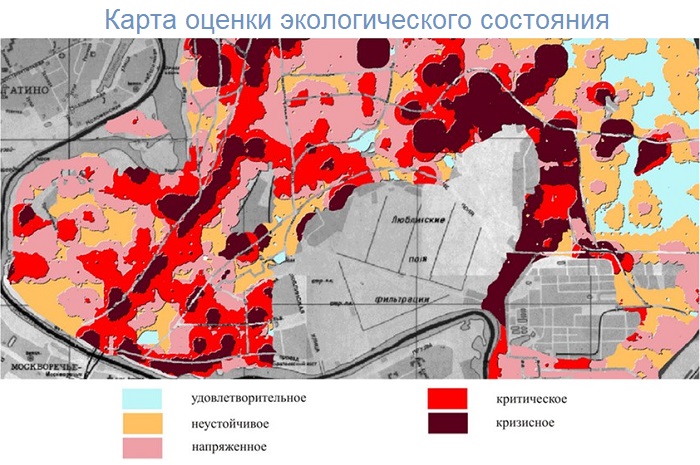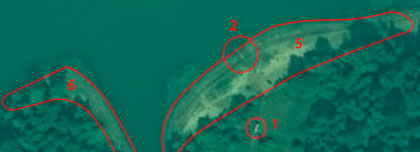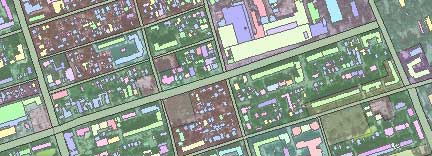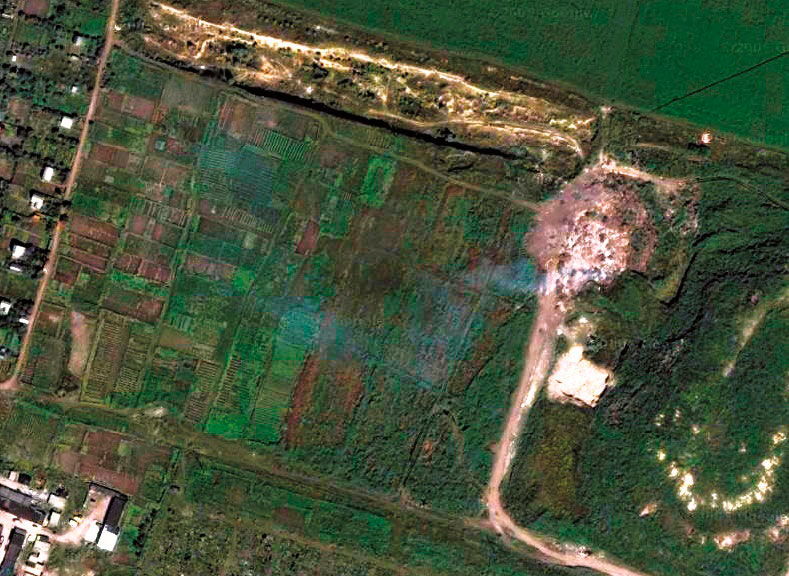Sat-Sun: Non-working days
Introduction
Physiology and behavior of most life on Earth, or in close proximity to it, have evolved over billions of years to align with the natural day-night cycle of our planet. However, over a relatively short period of time, humans have disrupted this natural lighting cycle, and now artificial lighting at night is widely prevalent in our lives.
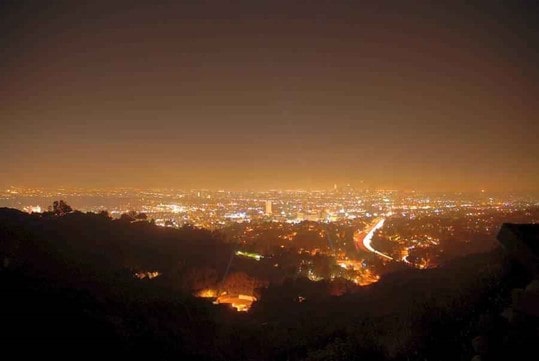
Figure 1 - Artificial Lighting at Night
At first glance, what harm can seemingly harmless artificial lighting do to the environment? In this article, we will delve into the problem of light pollution and its solutions through remote sensing.
History of Light Pollution
Light pollution, also known as skyglow, refers to the brightening of the night sky due to artificial sources of light, the glare of which scatters in the lower layers of the atmosphere. It interferes with astronomical observations, disrupts the biological rhythms of living organisms, and can even lead to the death of some of them. This phenomenon is sometimes referred to as "light smog."
At any given moment, half of the Earth experiences nighttime. For countless millennia, every animal, ecosystem, human, city, and settlement has adapted to the night as half of the natural cycle of light and darkness, regulated by the rising and setting of the Sun. However, in less than a century, humans have transformed the night with the advent of widespread artificial lighting.
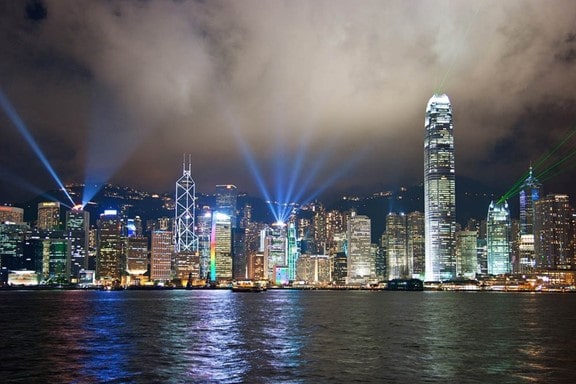
Figure 2 - Widespread Artificial Lighting
The study of light pollution and its impact on the environment at night is a relatively young and rapidly evolving field. The first study was conducted by the University of Plymouth in the United Kingdom. Scientists demonstrated that artificial lighting in coastal cities affects three-quarters of marine animal habitats. The consequences of this profound change in the pace of life are only beginning to be understood. Currently, it is known that they include threats to ecosystems, human health, climate, and the visibility of the night sky.
Today, approximately 23% of the Earth's surface is within the zone of light pollution, and nearly 80% of the population is exposed to it, including 99% of those living in Europe and the United States.
Every year, the world becomes brighter. The area of artificially lit areas increased by 2.2% from 2012 to 2016, and light brightness increases by 1.8% annually.
Types of Light Pollution
Currently, there are five types of light pollution. Let's examine each of them.
1. Light Trespass
This is a common issue caused by unwanted light that enters homes and disrupts sleep patterns. Many countries around the world are developing outdoor lighting standards to protect people from its harmful effects on health.
2. Over-Illumination
Excessive use of artificial lighting during the daytime, improper light sources, and the use of indirect lighting all fall under the category of over-illumination. Such lighting practices waste resources and lead to the consumption of millions of barrels of oil annually in the United States alone.
3. Glare
Glare poses a threat to public safety. The intrusion of bright light into the eye's retina can cause serious contrast vision problems. It also creates road hazards, as the blinding glare from headlights, especially at night, can lead to temporary blindness.
4. Light Clutter
Light clutter is caused by the excessive concentration of city lights, which can have an adverse effect on people.
5. Skyglow
Skyglow results from light reflecting off illuminated surfaces and light directed into the sky. It scatters through Earth's atmosphere, creating a glow in the night sky.
Impact of Light Pollution on the Ecosystem
Danger to Humans:
First and foremost, as mentioned earlier, light pollution affects human health. But how? A large amount of artificial light, both outdoor and indoor, affects circadian rhythms—the internal clocks that regulate a person's day and night activity. In particular, disruption of circadian rhythms affects the production of melatonin—a chemical that has antioxidant properties and helps induce sleep. Melatonin also boosts a person's immunity and reduces cholesterol levels. A deficiency of this hormone leads to sleep deprivation, fatigue, headaches, stress, anxiety, and other health problems.
However, this problem affects not only humans but the entire ecosystem.
Danger to Animals:
- Disruption of migration patterns
- Disruption of reproductive cycles
- Compromised habitat formation
- Loss of some species due to bright artificial lighting
Danger to Plants:
- Impact on photosynthesis
- Disruption of the growth cycles of plants
- Delayed leaf shedding in trees
- Shift in flowering stages
Impact on the Atmosphere:
Excessive nighttime lighting means overconsumption of electricity and a significant increase in greenhouse gas emissions.
Impact on Astronomical Observations:
Due to artificial skyglow, the visibility of faint objects is distorted, as the contrast between them deteriorates. As a result, in large cities, only bright stars, the Moon, and some planets such as Jupiter, Mercury, Venus, and Mars are visible in the night sky. Observing distant space objects like nebulae, galaxies, star clusters becomes challenging from urban areas.
Fighting Light Pollution
The main methods to combat light pollution include:
- Control of Light Levels: Light should not be brighter than necessary. Experts advocate for using the minimum required level of illumination.
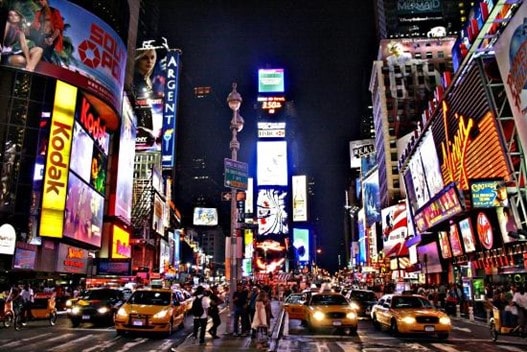
Fig. 3 - Light Pollution - Understanding the Purpose of Artificial Lighting: If you cannot avoid lighting, eliminate unwanted light, meaning direct lamps and lanterns only to the places that really need illumination.
- Monitoring Color: Use warmer shades whenever possible. Experts suggest limiting short-wave blue-violet light to the minimum necessary amount, as it is most harmful to insects and animals.
Satellite Monitoring of the Impact of Artificial Light on the Environment
Typically, light pollution is prevalent in large cities. Conducting ground-based monitoring in such cases is not practical. Satellite remote sensing is the only practical means of measuring the impact of artificial light on the most sensitive ecosystems, as direct sensing in these areas is difficult or impossible.
The first measurements of night lights from satellite platforms were made in the early 1970s as part of the now declassified U.S. Department of Defense project known as the "Defense Meteorological Satellite Program." Besides having a generally coarse spatial resolution, the data obtained has several limitations, including six-bit quantization, relatively low dynamic range, and the absence of both spectral discrimination and onboard calibration. Nonetheless, the data were used in the late 1990s to create the first global atlas of light pollution.
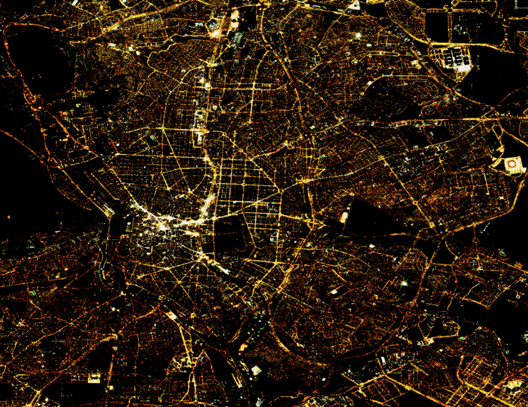
In recent years, efforts have been made to develop small satellites for nighttime observation. The precursor to almost all of these efforts is the Nightsat satellite concept from 2007. At that time, the DMSP-OLS instrument was the only orbital mission providing data for studying global light pollution.
Today, the advent of small satellite technologies has opened a new class of potential nighttime observation satellites. These satellites typically compromise on high spatial resolution and wide spectral sensitivity in exchange for relatively short mission lifetimes and/or limited coverage. Examples include Chinese satellites such as Luojia 1–01 (LJ1-01), JL1-3B and Jilin 1–07/08, the Israeli satellite EROS-B, and the Aerocube CubeSat demonstration series from The Aerospace Corporation. These satellites generally excel not only at detecting nighttime lights but also at collecting weather remote sensing data.
Let's illustrate the difference in modern nighttime imagery using the example of Charles de Gaulle Airport in Paris.
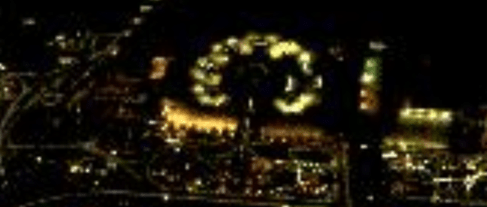
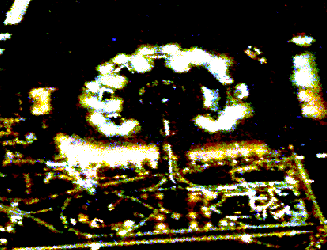
The difference is evident, isn't it?
Practical Application of Light Pollution Monitoring from Space
Using nighttime satellite imagery, it is possible to:
- Create a light pollution map for individual regions as well as large-scale territories with subsequent monitoring of changes.
- Create a global atlas of artificial nighttime brightness.
- Develop algorithms for automatic source identification and extraction of light sources.
- Conduct forecasting and monitoring of the spread of light emissions.
Light pollution distribution map in China (example)
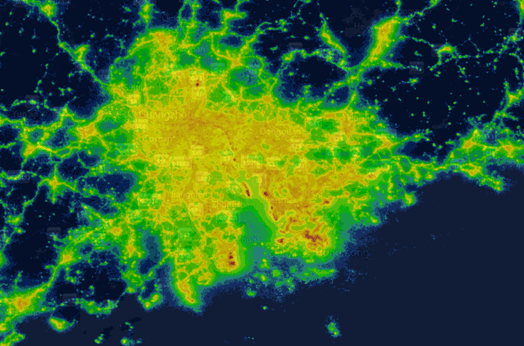
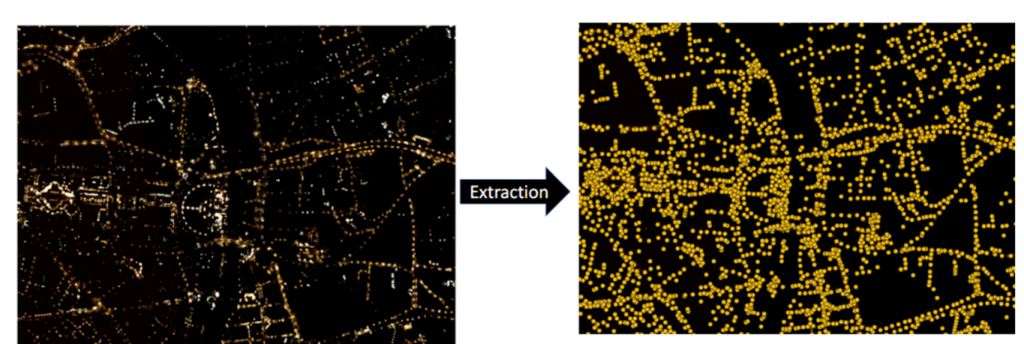
Global Atlas of Artificial Nighttime Brightness
Below is a fragment of the light pollution map. The map is interactive, you can greatly zoom in and examine the illumination of any city or area of the planet in retrospect. Details at the link

Benefits of Light Pollution Monitoring from Space
- Wide Area Coverage
- Effective Observation
- High-Resolution Imagery
- Capability for Both Photos and Videos
Limitations of Light Pollution Monitoring from Space
- Relevant research data may not be readily available
- Cost
Is Light Pollution a Relevant Issue in Moscow?
A global atlas of light pollution clearly shows that major metropolitan areas are most susceptible to this problem, and Moscow is no exception.
Below is a map showing the distribution of light pollution in Moscow and the Moscow region.

It's evident that 90% of the territory in the capital city of Russia is affected by light pollution.
Within Moscow, there are over a hundred specially protected natural areas (SPNAs) where special conservation regulations apply, and economic activities are partially restricted. These are the "green laboratories" of the capital.
Consequently, the city is rich in both flora and fauna. Let's examine how heavily the most popular nature reserve in Moscow, Losiny Ostrov (Elk Island), is affected by light pollution.
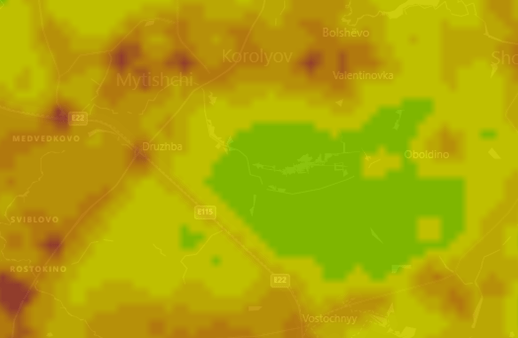
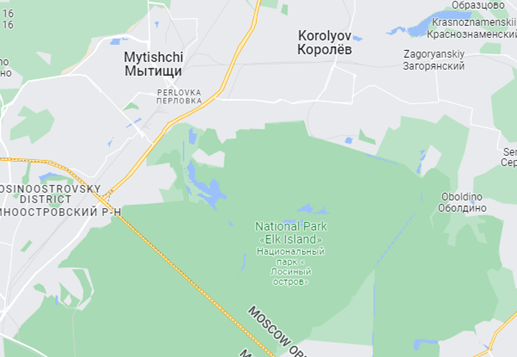
It's evident that the values around the national park are close to the maximum. Within the park itself, the situation isn't any better, with values above average. This means that the natural day and night cycle in this area is disrupted 100%, which, to put it mildly, has a detrimental impact on the plant and animal life.
Moscow is the city most affected by artificial nighttime light pollution in Russia.
The article has presented just one example of the harm caused by nighttime artificial light in Moscow, but in reality, there are thousands of such examples. They range from insects dying due to the illumination of a single billboard to the death of bodies of water due to the proliferation of phytoplankton. Therefore, it can be concluded that this problem is particularly relevant.
This is precisely why it's necessary to regularly monitor light pollution in the Moscow region, implement urban planning for street lighting, and classify administrative units. All of this will help preserve the ecology of Moscow and the Moscow region.
Conclusion
The issue of light pollution in the environment is particularly relevant in our time. The use of artificial light has grown exponentially in recent years. In the pursuit of modern technologies, we are altering the natural day-night rhythms, which has a detrimental impact not only on human health but also on the entire environment.
At present, researchers of this problem aim to create a system that would visualize the entire night sky at a low cost and with high ease of use for broader display and monitoring of nighttime conditions in protected areas. But these are just prospects.
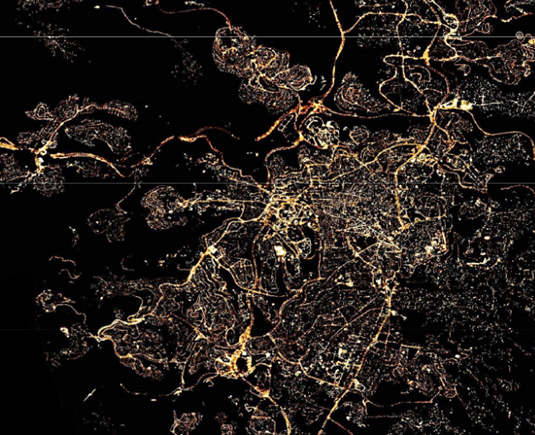
Satellite remote sensing of night lights remains our only effective means of understanding the problem of light pollution on a truly planetary scale.
LTD "Geospatial Agency INNOTER" is a direct partner of Earth night remote sensing satellite operators, possesses high expertise in processing the considered satellite images, and is ready to assist responsible authorities of state and municipal authorities in assessing the level of light pollution in the environment.





